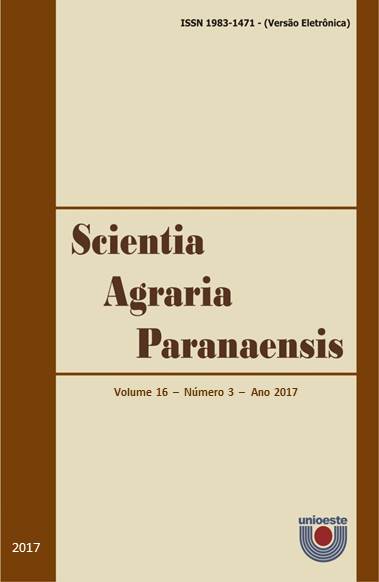Phytoremediation of salinized soils by the application of vinasse
Palabras clave:
poluição do solo, remediação de solos, salinidade, vinhoto.Resumen
Areas cultivated with sugarcane, where continuous vinasse application is used, tend to have serious physical, biological and mainly chemical problems due to the excess nutritional load that is transmitted by this byproduct. In order to evaluate the chemical quality of the soil after phytoremediation, an experiment was carried out in protected cultivation in the area of Experimental Farm Eduardo Meneghel Rando, of campus Luiz Meneghel of the State University of Northern Paraná, in the city of Bandeirantes, Paraná State, Brazil, and evaluated by the factorial design at 0, 30, 45 and 60 days after emergence of the crops and the secondary plot of the six treatments with three replicates: T1- Crotalaria spectabilis, T2- Mucuna deeringiana, T3- Pennisetum americanum, T4- Zea mays, T5- Canavalia ensiformis and T6- Phaseolus vulgaris. The experiment was carried out in pots with a capacity of 12.6 L, filled with soil collected at two depths 0-20 and 20-40 cm, at the USIBAN-Açúcar and Álcool Bandeirantes S/A industry, in the city of Bandeirantes, and initially evaluated for their routine chemical characteristics. Through destructive analysis the soil was evaluated from 0-20 cm and 20-40 cm, for routine analysis of soil chemical parameters at 30, 45 and 60 days after emergence (DAE) of the crops. The results allowed conclude that the cultivation of millet was the treatment that best remedied potassium up to 45 DAE in soils salinized by the application of vinasse.
Descargas
Publicado
Cómo citar
Número
Sección
Licencia
Aviso de Direito Autoral Creative Commons
Política para Periódicos de Acesso Livre
Autores que publicam nesta revista concordam com os seguintes termos:
1. Autores mantém os direitos autorais e concedem à revista o direito de primeira publicação, com o trabalho simultaneamente licenciado sob a Licença Creative Commons Attribution que permite o compartilhamento do trabalho com reconhecimento da autoria e publicação inicial nesta revista.2. Autores têm autorização para assumir contratos adicionais separadamente, para distribuição não-exclusiva da versão do trabalho publicada nesta revista (ex.: publicar em repositório institucional ou como capítulo de livro), com reconhecimento de autoria e publicação inicial nesta revista.
3. Autores têm permissão e são estimulados a publicar e distribuir seu trabalho online (ex.: em repositórios institucionais ou na sua página pessoal) a qualquer ponto antes ou durante o processo editorial, já que isso pode gerar alterações produtivas, bem como aumentar o impacto e a citação do trabalho publicado (Veja O Efeito do Acesso Livre).
Licença Creative Commons
Esta obra está licenciada com uma Licença Creative Commons Atribuição-NãoComercial-CompartilhaIgual 4.0 Internacional, o que permite compartilhar, copiar, distribuir, exibir, reproduzir, a totalidade ou partes desde que não tenha objetivo comercial e sejam citados os autores e a fonte.


